We use cookies, along with some third-party sites (like Google, Facebook, etc.). By continuing to visit this site you agree to our use of cookies.


- Search Yachts
- Destinations
- Company
- Sailing info
- Blog
Need help? Contact us
Enrich your life by adding sailing adventure in one of the Mediterranean jewels, the Balearic Islands. Balearic Island is a Spanish archipelago situated in the Balearic Sea made up of Mallorca, Menorca, Ibiza, and Formentera with some smaller islands such as Cabrera and Dragonera.
Situated in Western Mediterranean, its unique position just midway between Spain and North Africa is blessing your trip with all-year-round sunshine.
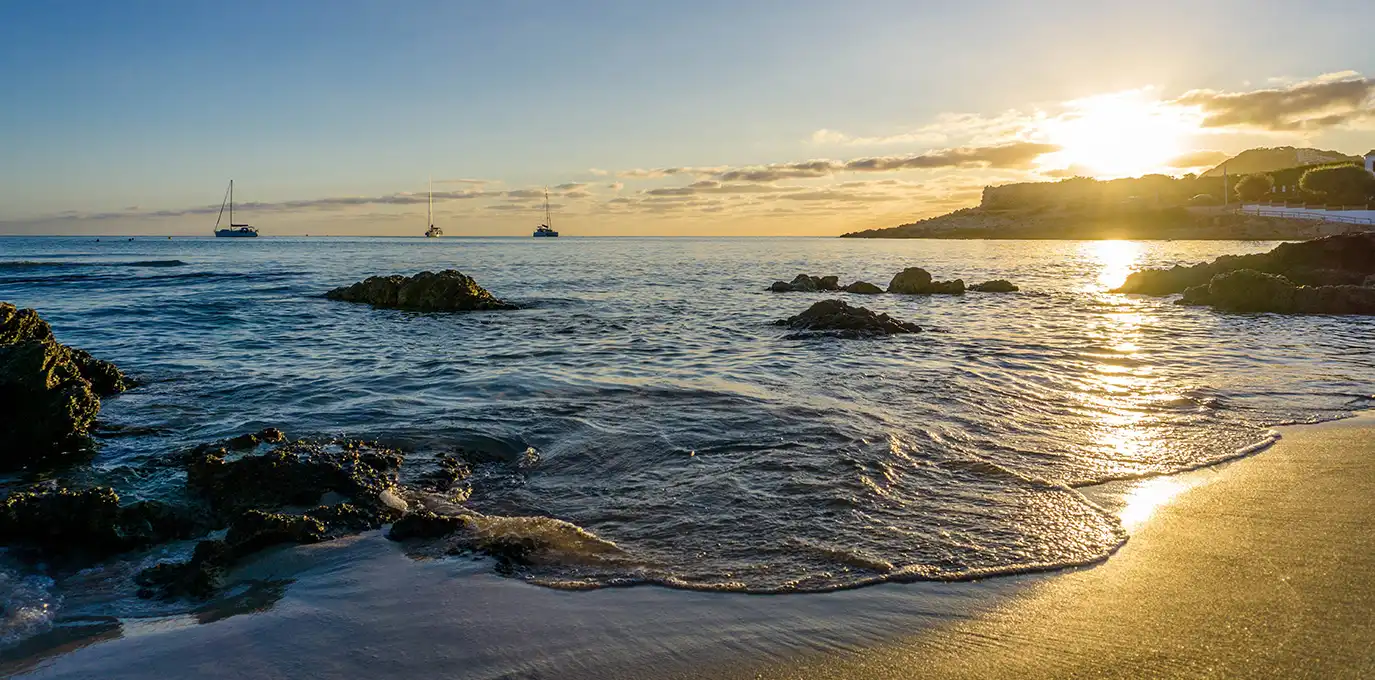
This group of islands has a Mediterranean climate, making winter period temperature around 12C from October to March making a nice transition to hot and sunny summers of a daily average temperature of around 25.5C from April to October. Therefore, making it a perfect destination to visit at any time of the year.
Furthermore, on your sail journey, you will find a huge variety of things to see, do and enjoy. From a rich landscape that has many hidden bays, caves, cliffs, and beaches on the coast to historic towns, and fishermen villages that pull you in and call you out to explore them, where many hidden restaurants are with a wonderful cousin which is a must try and differ from island to island, art galleries, small shops, coffee places, and historical monuments. If you are looking for activities to put your legs to work there are many trails along the way both for hiking in the mountains that reach up to 1500m high and cycling enthusiasts, nonetheless, there are options also to rent a 4x4 buggy, ATV, and other vehicles.
Let’s not forget about party places that are on the menu for younger spirits that like to go out and dance, ending their night by welcoming the rising sun in the mornings to come.
There are many unturned stones for you to find and something for everyone to get out of this wonderful trip.
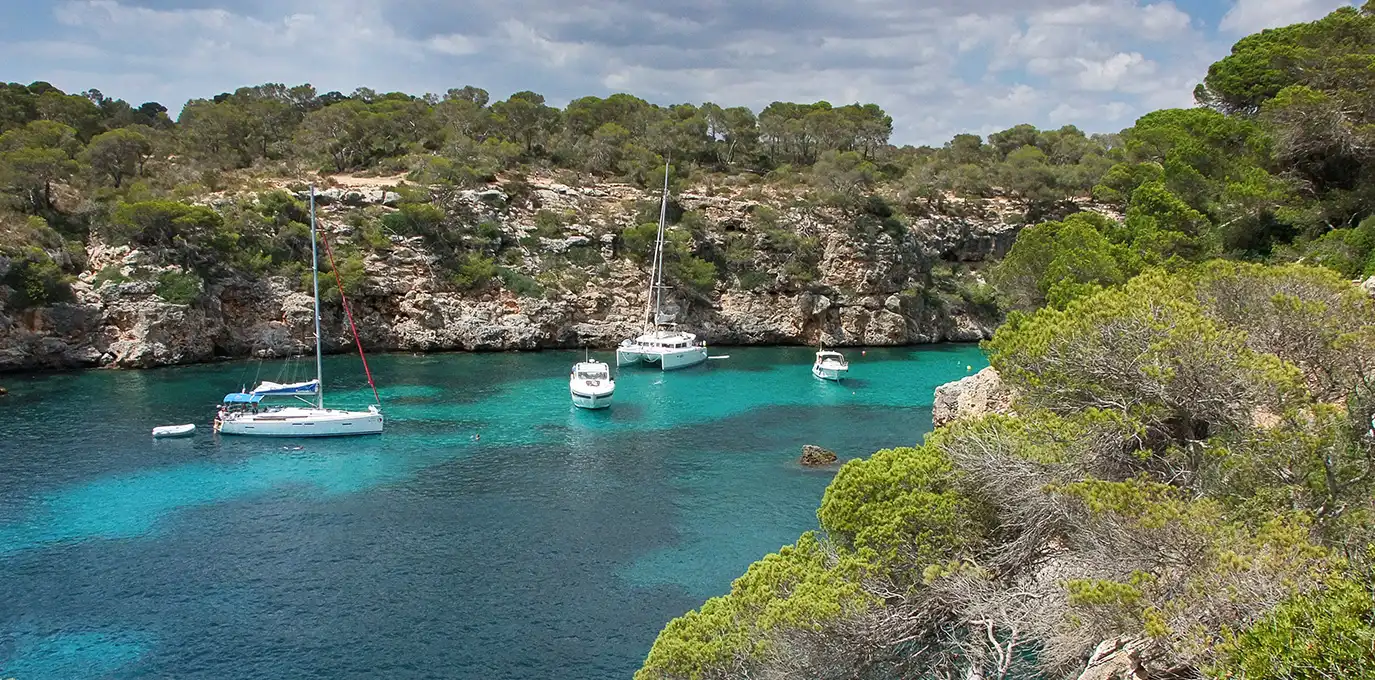
Your adventure will start in Palma de Mallorca whose history dates all the way to the Roman period 128BC. Throughout history, it was under the influence of the Byzantine Empire, and Moors (Islamic culture) and after 1229 it was under Catholics to this day.
Palmas de Mallorca’s rich history and cultural heritage left by those communities who lived here left us such a wonderful blend of architecture mix to explore around the city.
We would recommend visiting the following sights:
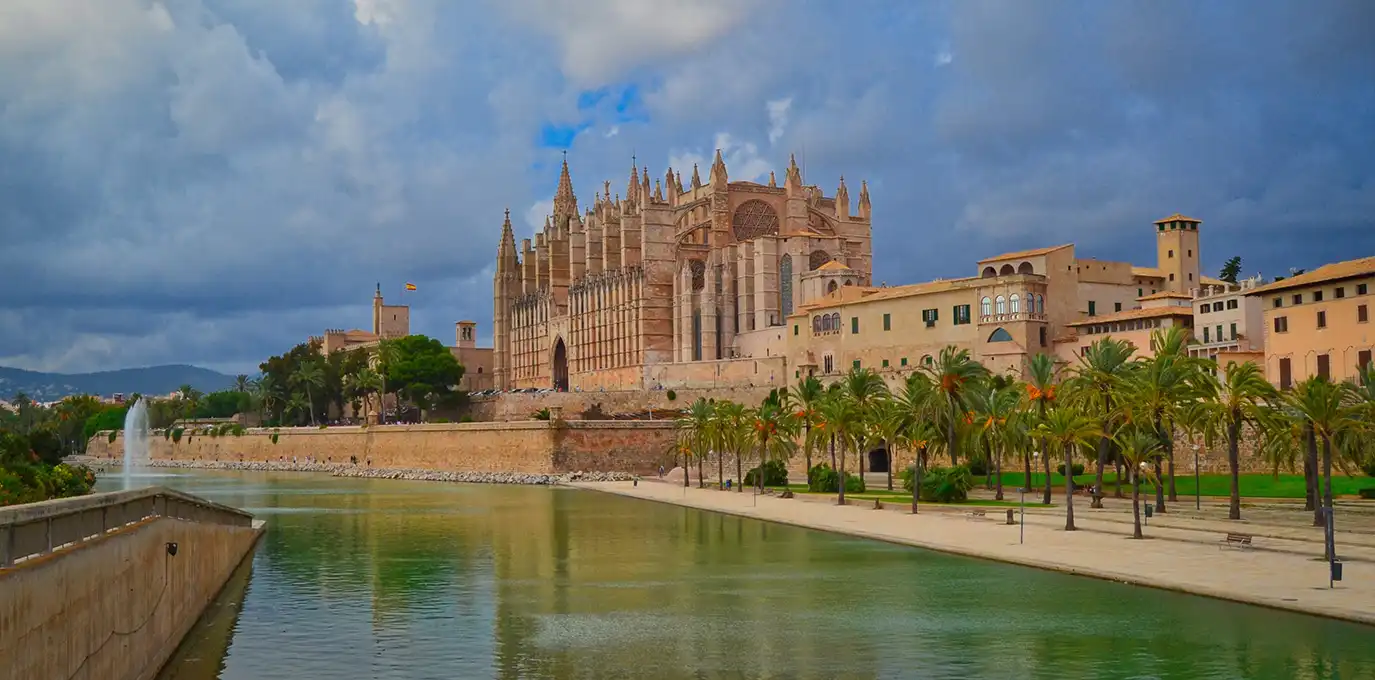
It is a 14th-century Gothic-style church also known as Catedral-Basílica de Santa María de Mallorca. Construction started in 1229 and finished in 1601. Cathedral is located in the old city of Palma. The height of 44m in the central nave makes it the 2nd highest of all Gothic cathedrals, in comparison to 33m in Notre dame De Paris and Saint-Pierre de Beauvais 48m.
Get lost and wander medieval streets and discover where they take you. Enjoy the traditional Mallorcan architecture, beautiful squares, and a courtyard while walking around. There are many small treasures to be found in this quarter such as bookshops, vintage shops, and antique shops.
Just 3km outside the city on a hill stands tall its protector. Built-in 14th for King James the II of Mallorca. It is unique because it is made in a circle, so it belongs to a group of a few circular castles in Europe. Firstly, used as a residence later on as a prison, and now as the main tourist attraction.
Bourne Boulevard is one of the most visited and elegant avenues in the old city. The Boulevard was built on the old riverbed Riera, which runs through the center of the city. A line of lofty trees offers nice shade during summer and during winter they are decorated with light to bring the Christmas atmosphere. Feel free, to sit down on one of many stone benches or order a coffee at coffee. Filled with many shops that offer luxury brands, it was given a nickname, the Golden mile.
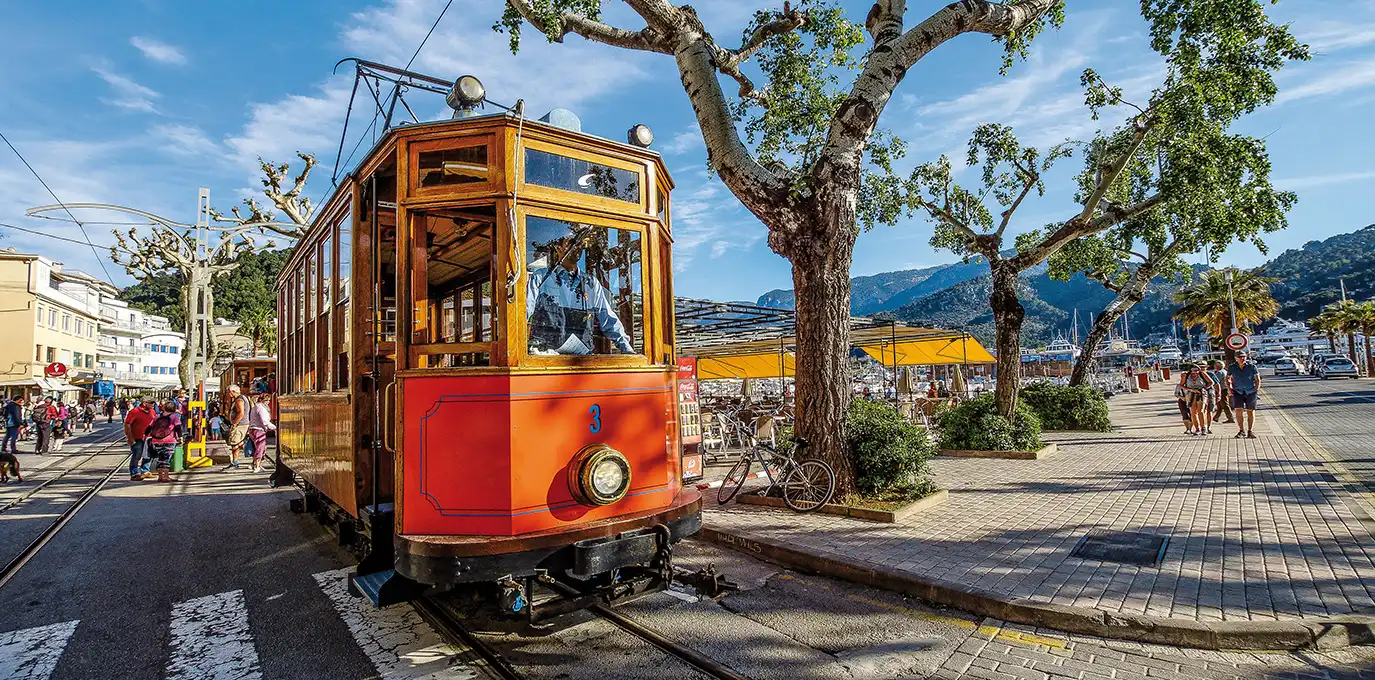
Blast from the past, Vintage excursion with a wooden train or tram from 1912. Most charming attraction by many, take a ride on the train between Palma and Soller. Enjoy the wonderful natural scenery with viaducts, bridges, and tunnels.
A traditional market that offers many varieties of food to buy and present a great opportunity to taste and eat tapas and other dishes. Located in the center of the old quarter.
Inviting beachfront walk that goes for 6km from Palma to el Arenal with the tree line.
Since it was opened In 2004, it hosted many artistic creations from 20th and 21st centuries. During the year its repertoire changes and offers the visitor many different collections, and art exhibitions from both domestic and international artists. Furthermore, it hosts music, theatre, artist performances, and poetry events as well as promotes experimental exhibits.
The fishing village where synergy happened between old-fashioned and hipster culture. Many fishermen’s houses were turned into hip cottages. A nice promenade provides an activity to stretch your legs go for a walk, ride a bicycle, or skate alongside charming restaurants and coffee places.
Nice area in the old town to spend time during the night with many restaurants, bars, and clubs.
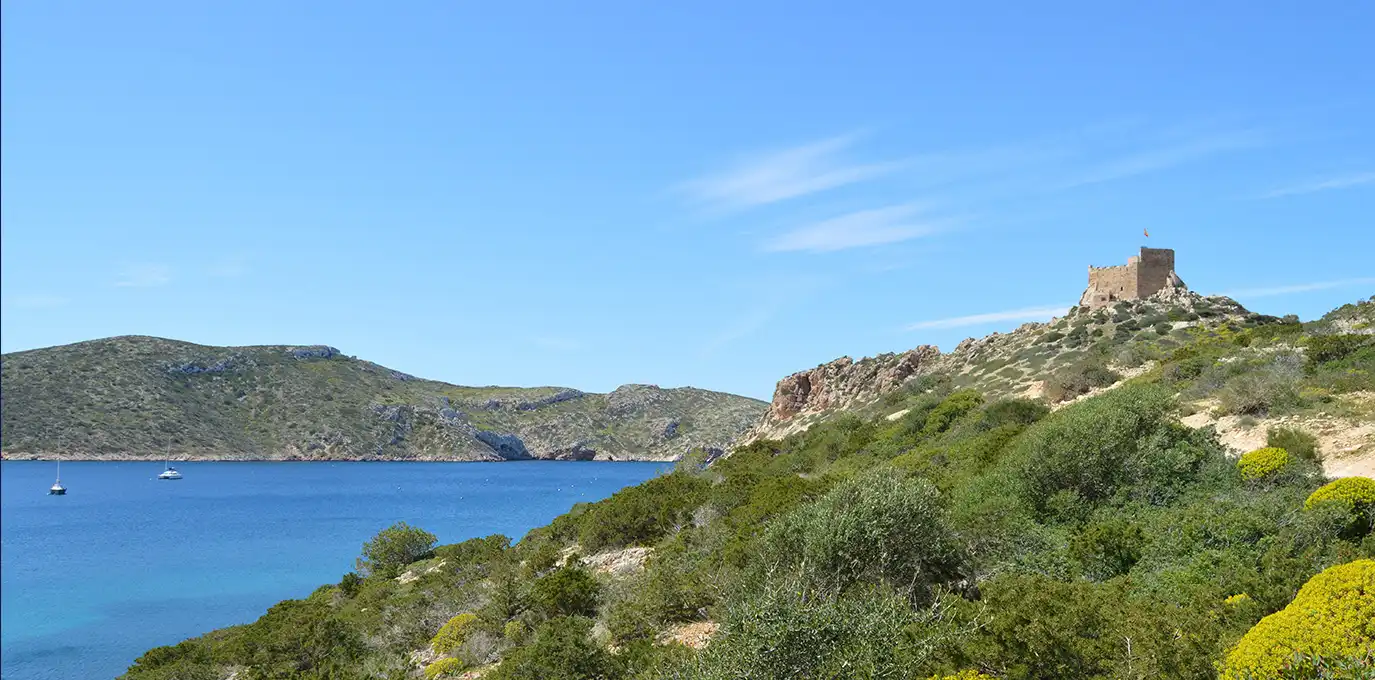
When entering Cabrera, you will discover a blue paradise with a crystal clear sea that is present throughout the entire archipelago.
Since 2019 it bears the title the largest National Park reserve in Spain. It has increased its protecting size from 10.000 to 90.000 hectares, both terrestrial and marine. furthermore, due to its shire size and well-preserved nature, it has more than 200 fish species, 400 botanical, and 150 bird species.
Cabrera archipelago has been uninhabited for long period in history until the mid-16th century, it was mainly used as a strategic point for military operations. That is why you get the feeling time has stopped there.
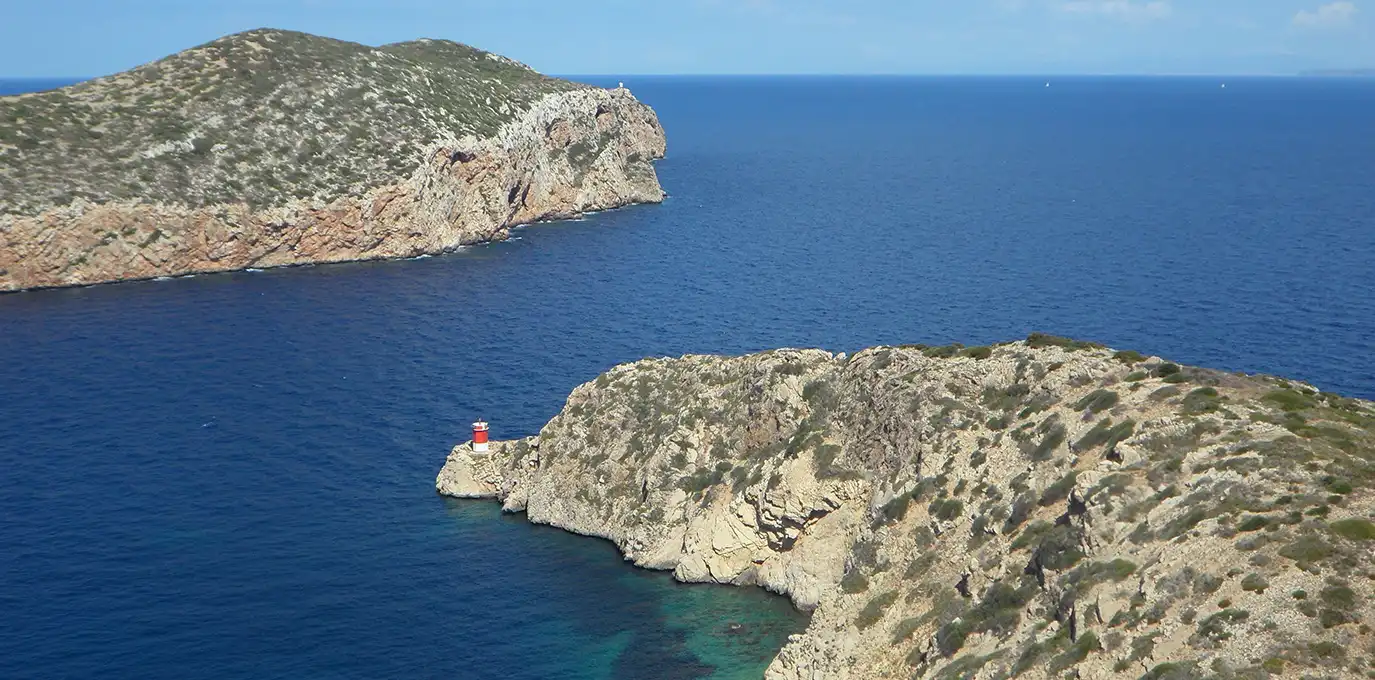
Things to discover:
The Blue Cave in Cabrera (Sa Cova Blava) where light and sea meets illuminates the cave thus creating a wonderful effect play of light and color.
8 Different hiking routes for you to embark on, be aware to bring water and sun protection, particularly during summer. The two most recommended routes would be to the lighthouse and to the Cabrera castle.
Cabrera castle (built in the 16-th century) is a place with the best view on the island, therefore making it a great place to enjoy sunrise early in the morning.
A unique place to snorkel and discover underwater wildlife.
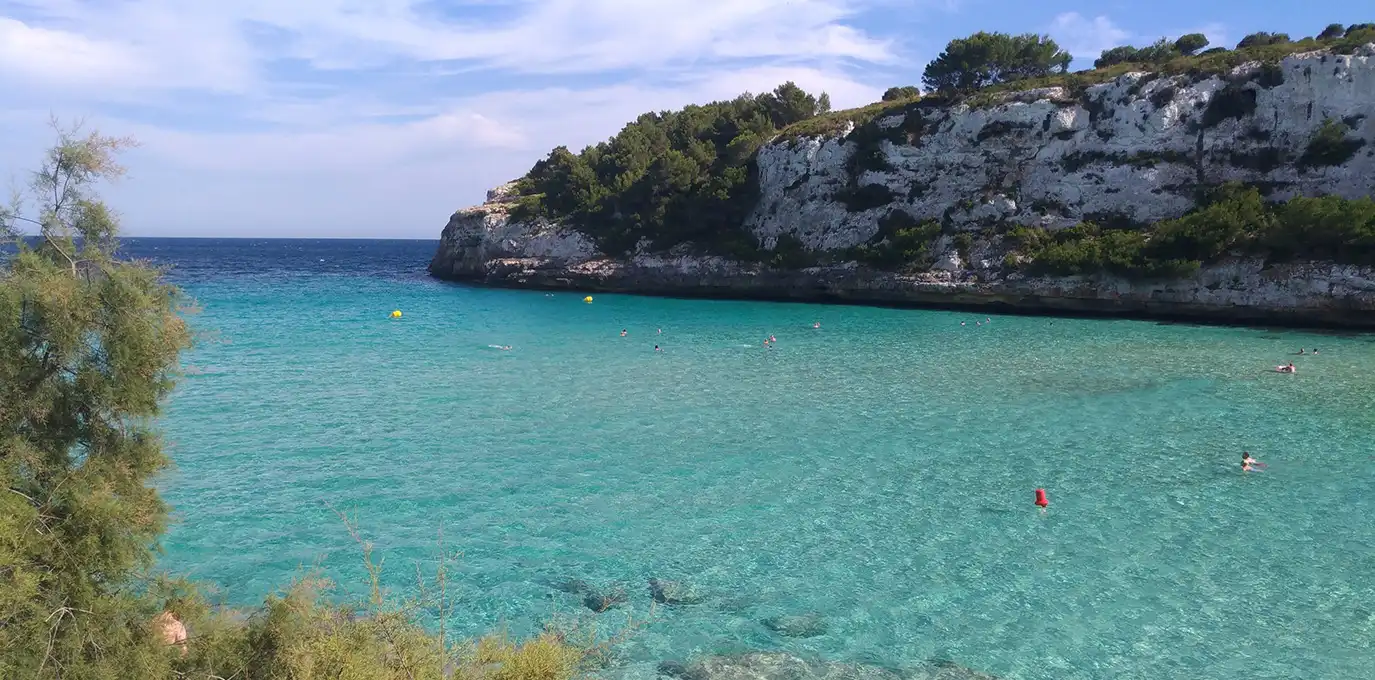
Porto Cristo is a little charming fishing village. The village and its marina are positioned at the end of Its bay, therefore providing a great shelter. On the coast of the bay is a blue flag sandy beach with clear waters and a laidback atmosphere. The Village provides a typical easy-going Mediterranean environment with some delightful Spanish cuisine and seafood.
Porto Cristo means “Port of Christ”, the name came from an event that occurred in the 13-th century during Christian re-occupation, a boat with a crucifix washed up on the beach. People then took it as a sign and named the fishing village Porto Cristo.
A pleasant stroll through the village will reveal a blend of charming ancient stone houses, modern houses, and boats in the harbor. While discovering the village you will find a beautiful old church on Plaza Del Carme, a mermaid statue in Calle des San Jorge, and on the coastline is an ancient tall watch tower Torre des Falcons from the 16th century positioned just above a hidden cave. Furthermore, there is a well-known cave system named Coves del Drach or Dragon caves as well as Hams’ Caves. There are daily tours of the caves with a musical performance on one of its lakes within.
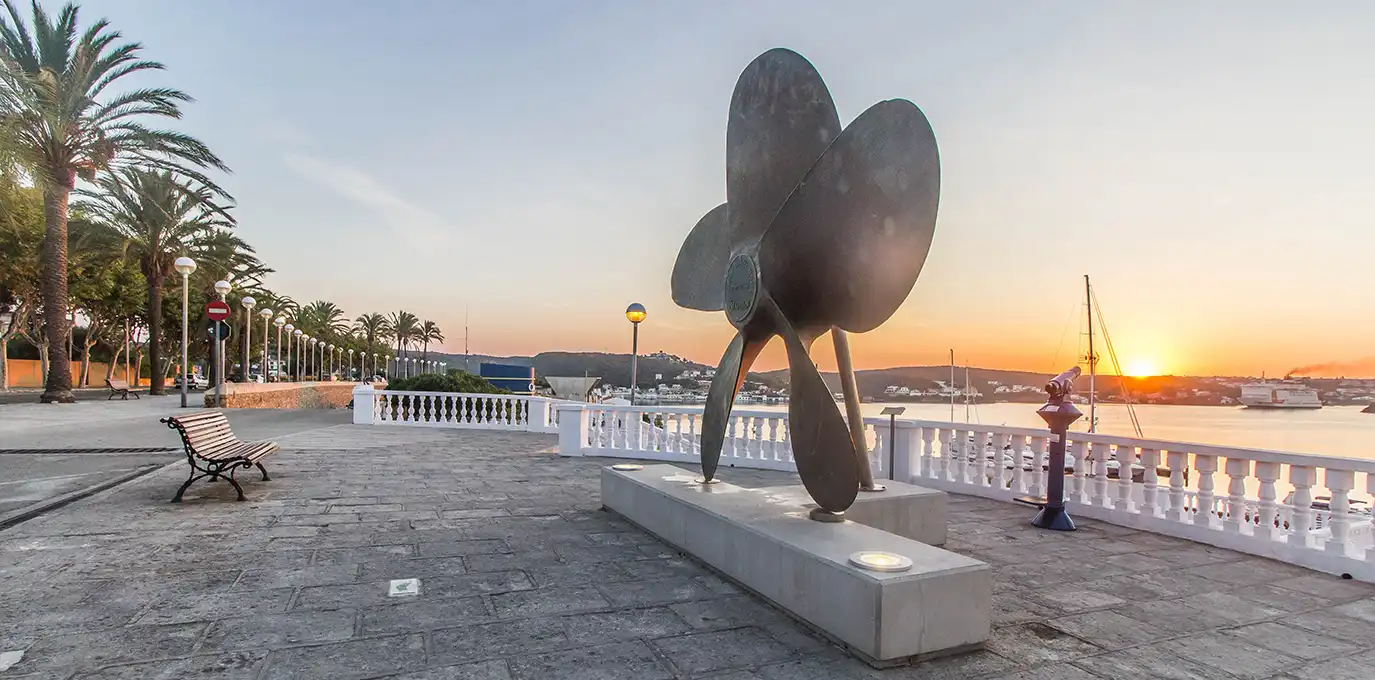
The city of Mahon is the capital of lovely Menorca, home to around 29.000 people.
It is widely speculated that the name Maó (Spanish: Mahon) finds its origin all the way to 205 BC when it was founded by Carthaginian general Mago Barca, brother to Hanibal who commanded the forces of Carthage in their battles against the Roman Republic during the Second Punic War. Prior to British rule, it was held by the Moors from the 8th to the 13th century and finally ceded to Spain by the Treaty of Amiens in 1802.
Furthermore, besides the Cartagena cultural influence, Mahon was also under British rule in the 18th century. Which can be seen in the Georgian-style architecture left in the city. However, what makes Mahon stand out regarding its history is the plentifulness of prehistoric structures. It is believed that the people who built the prehistoric constructions are also the ones that were involved in constructing Stonehenge in England and worked in Sardinia.
Mahon is known for its longest natural harbor, which stretches 5 km long and 900 m wide.
It is easy to get around on foot so take a walk-through street that will make you feel like turning pages of history books. It is a lovely place to spend your day exploring its history and evening dining in one of many restaurants that offer domestic cuisine.
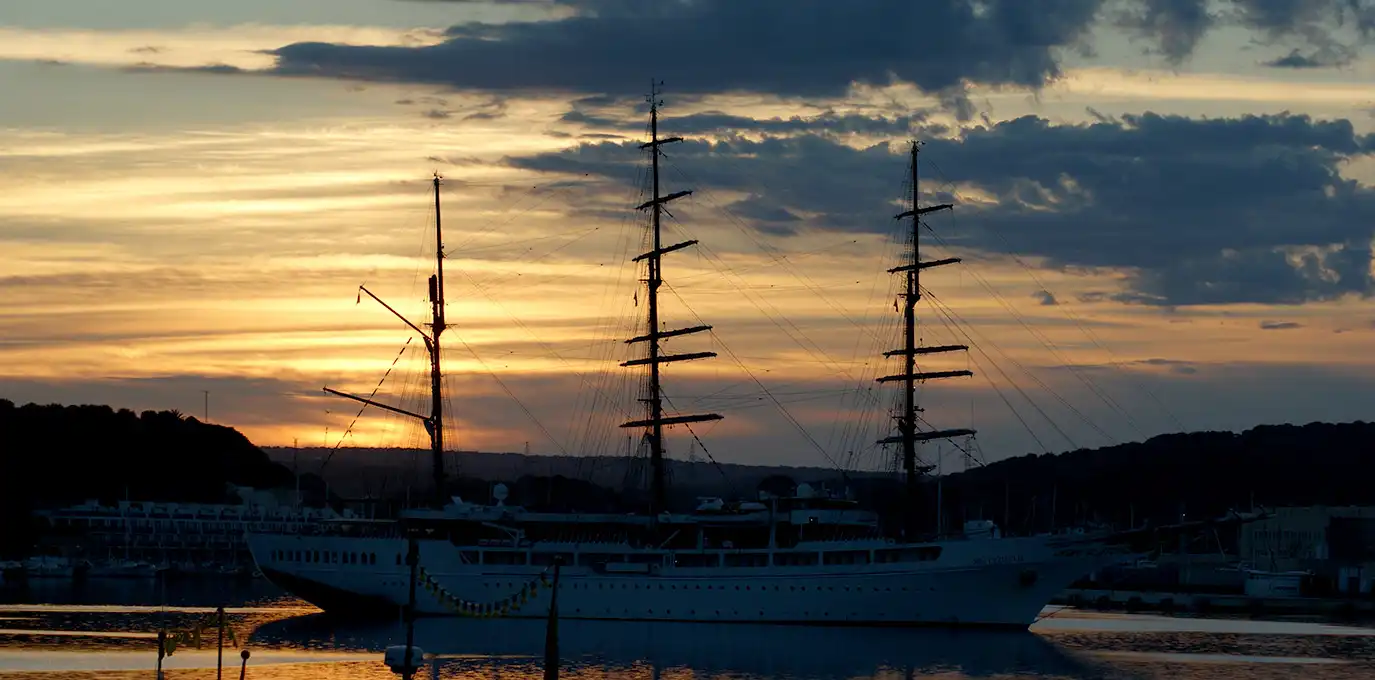
We would warmly suggest visiting the following:
Square Plaça d'Espanya, which holds beautiful historic buildings. In the vicinity is a church Iglesia de Santa Maria from the eighteenth century it is considered to be an important religious monument in the city and Centre D'art I D'historia Hernandez Sanz which is an art and history museum. One more church that we recommend visiting is the Iglesia de Sant Francesc from the thirteenth century.
If you would like to get a better insight into its history deep dive into Menorca Museum. It was built on the foundation of a former monastery. What is interesting about it is its collection of prehistoric artifacts which dates all the way to about 4000 BC from the Neolithic period.
Highly recommended to see Fortaleza De Isabel II, this historic fort was built between the years 1850 and 1875. Strategically located on the opening of the Mahon harbor, leaves it is a perfect example of military architecture, open to public visit.
For those who love to excite their taste buds look no further, Mercat de Peccados is a place for snacks and lunch place. It has a wide selection of tapas, pintxos, beer, and wines to go with your food.
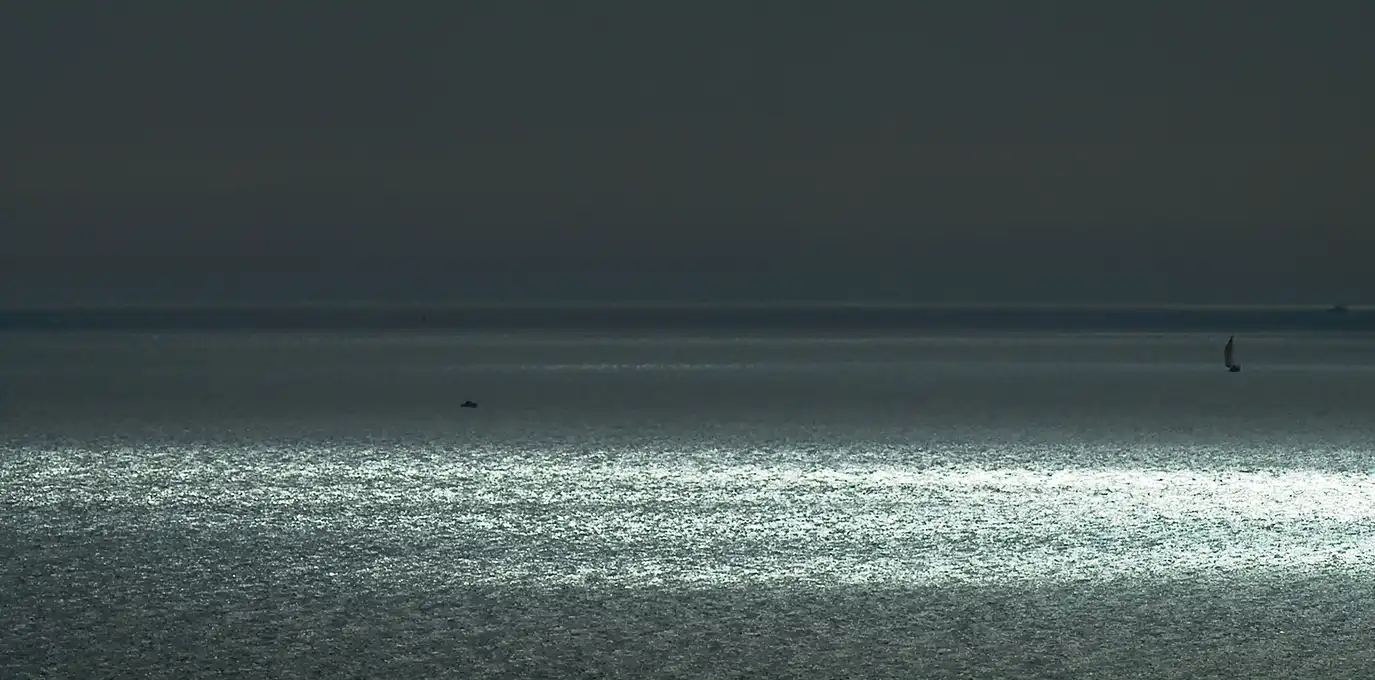
Fornells is much quieter than Mahon, around 1.000 people live permanently in this small fishing village, and in the summer the number rises due to the tourist season. It is situated at the entrance of the bay and concentrated around the fishing harbor with a view of a plain shore across the bay.
This particular village is well known for its special dish, Minorcan lobster stew. It is highly recommended to try it. Popular around sailing circles.
Things to see:
San Antonio Castle - Seventeenth-century castle and other similar fortresses were built with the purpose to defend the island from frequent pirate attacks from the sea and other possible threats.
Iglesia de San Antonio Abad - During the same period as the castle this church was built to establish a Christian presence in this part of the island. Its simple form building makes it a very spiritual place. You can easily spot it on the main square due to its white color.
Far de Cavalleria - It is the northern lighthouse on Minorca, standing tall at the 40 meters high cliffs, around 15km (10-15min by car) from the village of Fornells, also accessible by sea. There is also a nice beach with a small bar, the sand is reddish and nature untouched, and nearby is parking.
The Torre de Fornells - Is a defensive tower fortress, which primary purpose was to spot any approach from a foreign vassal and warn the village of a possible threat or approach of a friendly ship as well as to spot any change in weather conditions.
If you are in the mood to go and explore the beaches near Fornells, there are two of them Cala Tirant just 2-3km (reachable by foot/bicycle and car) from the town. It is a typical beach for the Balearic region with reddish sand. Another one is, Binimel la pregonda. It is a natural and wild beach untouched. By car it is 15min away, in case you get hungry there is a small restaurant with paellas and fish.
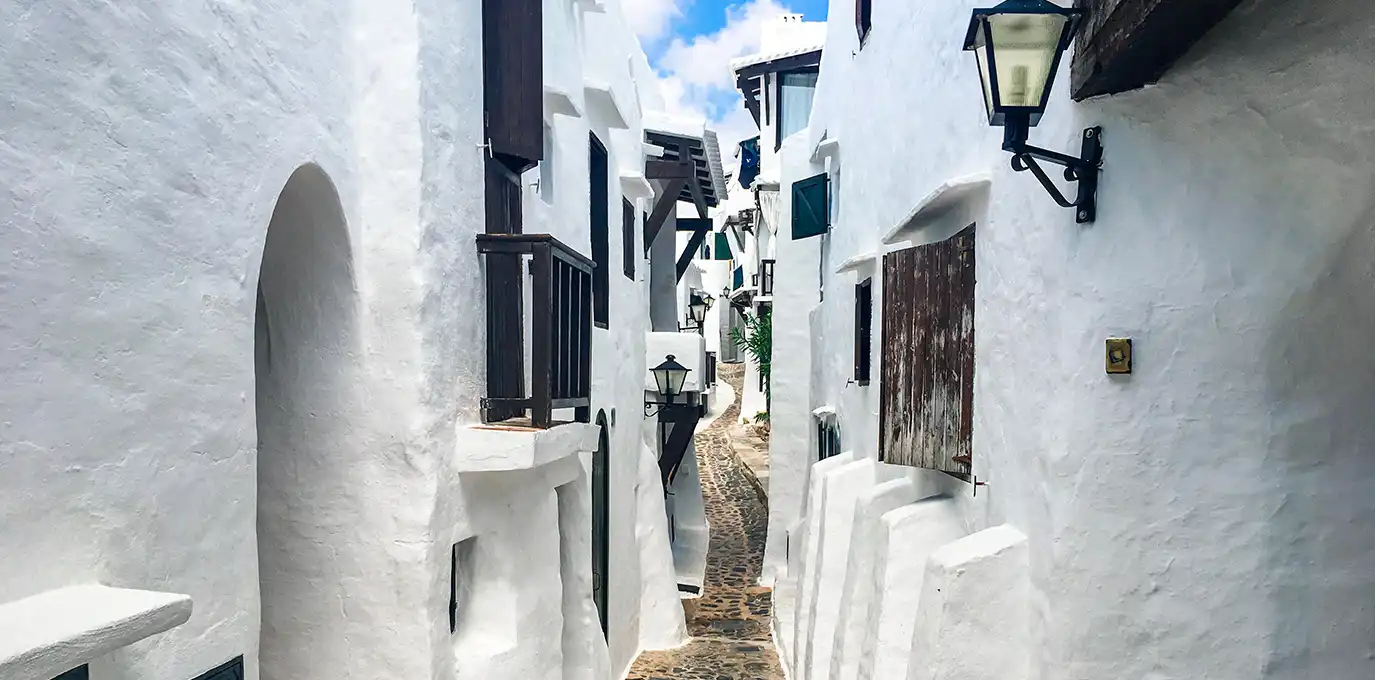
Ciutadella is the beauty spot of Menorca with its charming old port, Puerto de Ciutadella holding many seaside restaurants. The town is permeated with medieval streets, houses of nobles that used to live there, beautiful Baroque and Gothic churches, and its defense fortresses, which are a pleasure to explore. Its beauty and historical heritage are backed by Bien Cultural-Artístico Español.
As the rest of Menorca, it is filled with many historical events and cultures that have changed and interwind with each other making the whole town a beautiful historical legacy to further generations. With around 30.000 people living in the town and covering more than 180km2 makes it the biggest one on the island. Although, Mahon is considered to be the capital due to the British rule granting the title to Mahon in 1774.
Since you will stay at the marine or its berth, the closest to inspect is the Old Harbor. During the summer craft market is set up and all the restaurants are open, they are spread through the boardwalk. Plaza es Born makes the center of the town with the Born Obelisk in the middle reminding people a heroic act of unsuccessful resistance against the Turks who attacked and captured it in 1558., it is situated just above the cliff that overlooks the port and you can monitor everything going in the port. The building that stands out on this square is Ajuntament or Town Hall which is now serving as the Tourist office. It used to be an old Muslim fortress and was home to the Arab governor at the time. Furthermore, at Placa la cathedral is the Cathedral Citudella which was built in the 14th century and was previously a mosque, which is decorated by a 19th-century baroque facade.
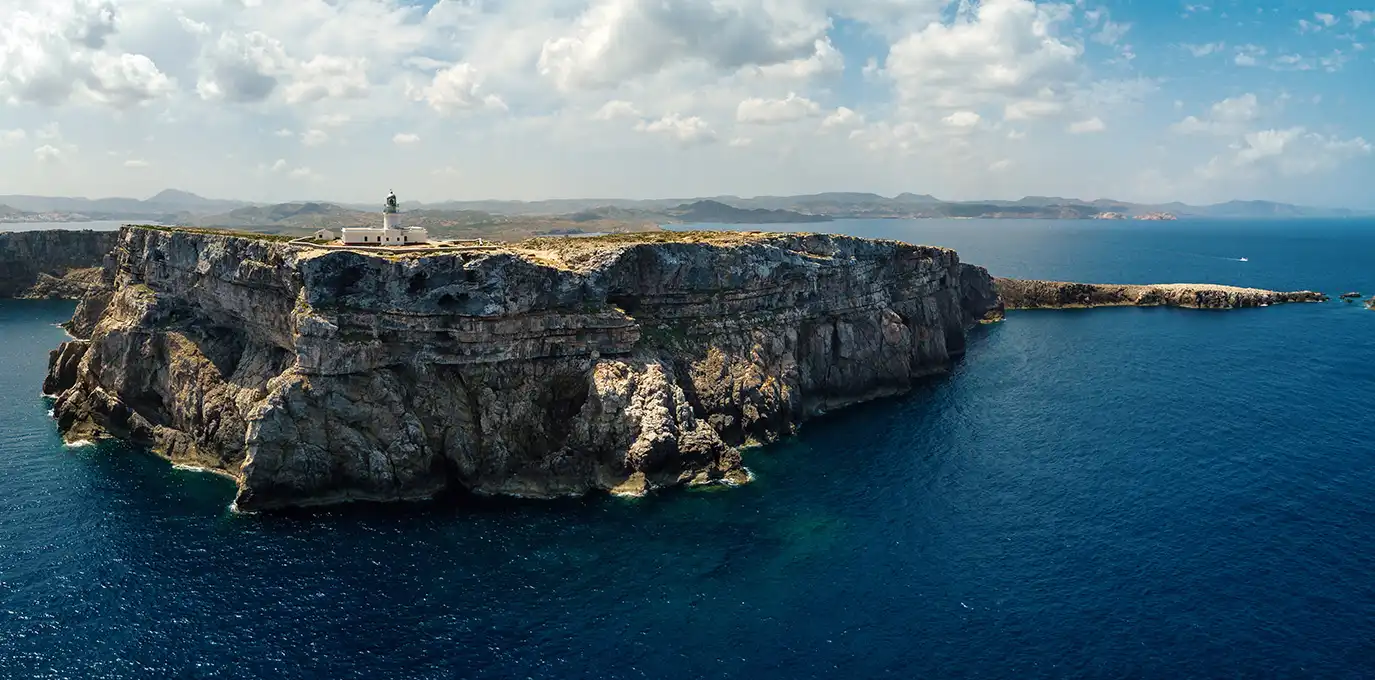
In addition to the old town and its port, you must take a walk along the promenade to El Castillo de San Nicolas. However, if you are in the mood for shopping Ses Voltes would be the place to do it, surrounded by nice arcades.
Depending on the weather, find a nice bay to drop the anchor and stay overnight away from busy villages or towns it’s time for lots of swimming, sunbathing, reading, and resting.
Port d’Andratx is a port that started to evolve into a modern port with a lot of luxury villas mid the 20th century due to the rise in popularity among tourists. The Port holds around 3,300 permanent inhabitants. Just 5 km away from the town of Andratx (55 min by foot or 7min by car).
Port is shared between yachts in the marina and fishermen and their daily activities.
Regarding its history, there are fortresses Sant Carles and Sant Francesc that date to the 19th century, built as a watchful eye against any outside threat. There is also the island Sa Dragonera, this uninhabited island is a National Park since 1995. it is a host to more than 350 different plant species and endemic birds. It is possible to visit it by boat (20min). For anyone interested in art, there is the Liedtke Museum, situated inside a modern villa on the top of the cliff. Besides its art, it enriches its visitor with a spectacular view of the entrance to the bay and Mediterranean. Furthermore, for those who seek to do some activity during the day, there is also a hiking road to Sant elm and a golf course if you would like to practice your swing at the tick Andratx course of the list.
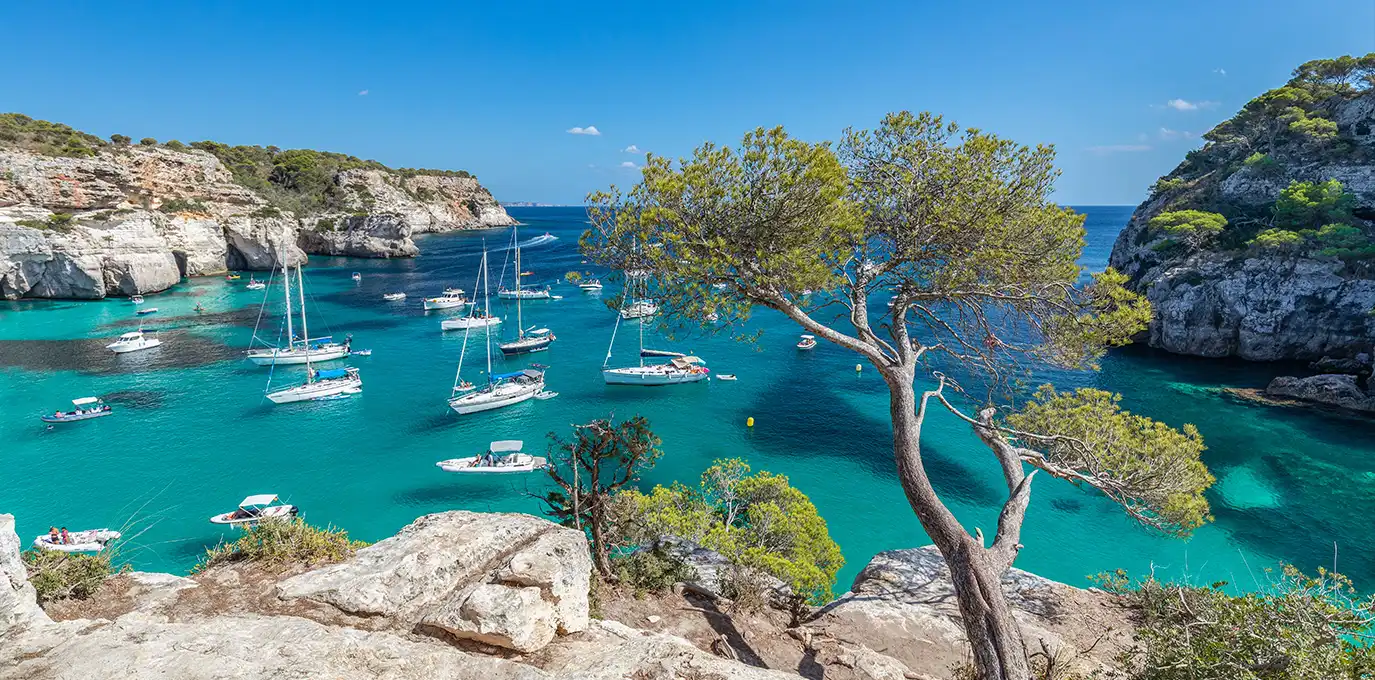
Cala Binirras is a beautiful bay and beach with crystal clear water that became a popular anchoring place to witness and enjoy a romantic sundown during summer which goes along with the sound of drums every Sunday when hippies gather to perform a hippie ritual “drum down the sunset”. Fill your day with snorkeling, relaxing at the beach bar, and discovering the surrounding area.
Your first stop on the famous party island of Ibiza is filled with the opportunity to try out that nightlife everybody is talking about. But first, let's deep dive into some information about what to find and expect from this nice place.
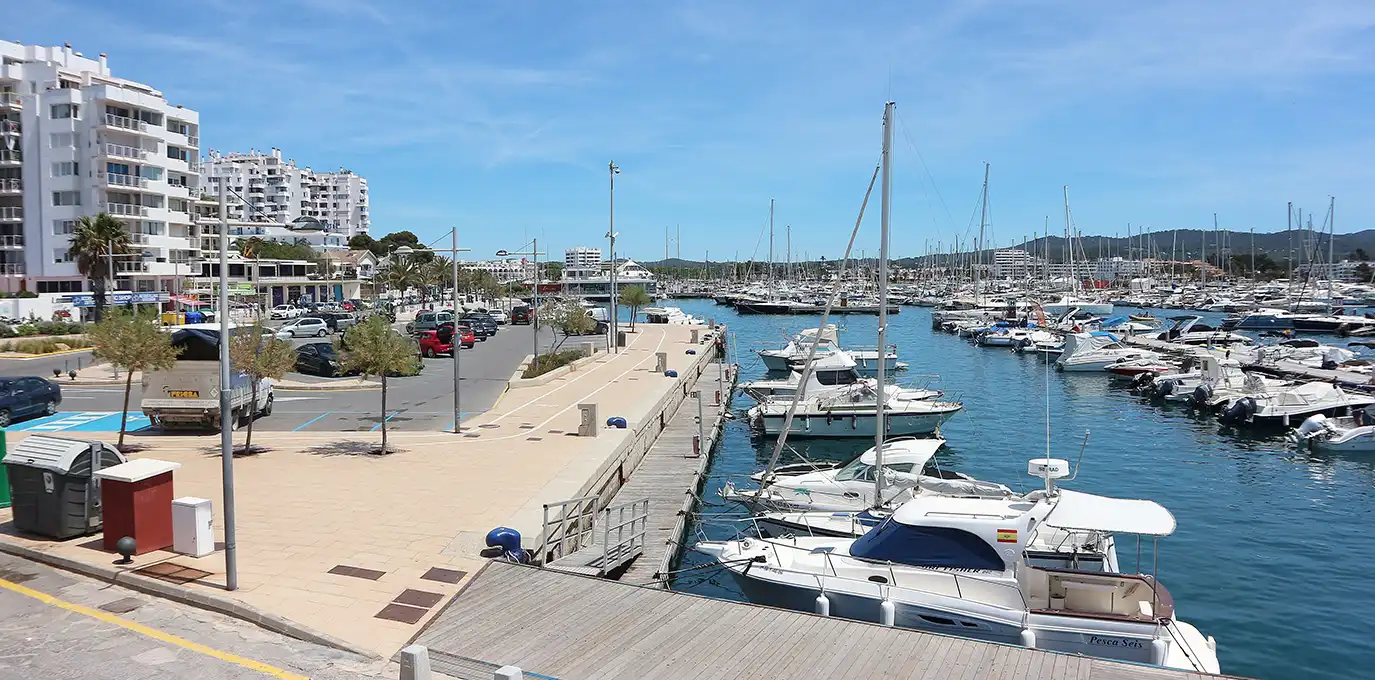
The history of Sant Antoni de Portmany settlement begins in 1305 when the archbishop approved to build of the church for the people there, the church was eradicated in name of Saint Anthony thus the town got its name from it. Although, there is evidence from the bronze age, such as cave paintings and tools.
Surrounded by pinewood, coves, and many routes for walking presents a good alternative if you are not into partying. A nice place for a walk would be to the viewing point of Ca´n Bernadet, whose view stretches across the bay. Furthermore, the cliffs of Cap Nunó drop vertically to the sea just by Salada Cove, a traditional fishing spot. There are also many historical monuments to discover within its town.
One of the recent monuments to have been placed in the 1990s, in the middle of the roundabout near the port is I’Ou de Colom, Columbus Egg. Inside the egg is a hole that holds a small metal sculpture of the ship Santa Maria, which Columbus used to sail to the Americas. This is a monument to honor Christopher Columbus's achievements in discovering America. Also, there is a nice little underground chapel of Santa Ines in a natural cave near Talaia de Sant Antoni.

When did the nightlife start in Sand Antoni de Portmany? Well, it all started in the 1960s, when the tourism movement started across Europe. Port was very important being the main connection between the mainland of Spain, thus people started to invest in hotels and apartments attracting more people to come. In the 1980s it was discovered by the Britsh, putting it on the party map across the world, now hosting some of the most famous Dj playing electronic music.
The best place to start would be on the sunset strip where all the bars are located, getting warmed up and accompanied by a beautiful sunset carrying you into the nightlife. Most popular in the area are Café del Mar and Café Mambo, followed by Mint Lounge Bar, Café Savannah, and Fresh Ibiza. There are many nightclubs on the island, two of which are popular among tourists Es Paradis and Eden now renamed Kaos.
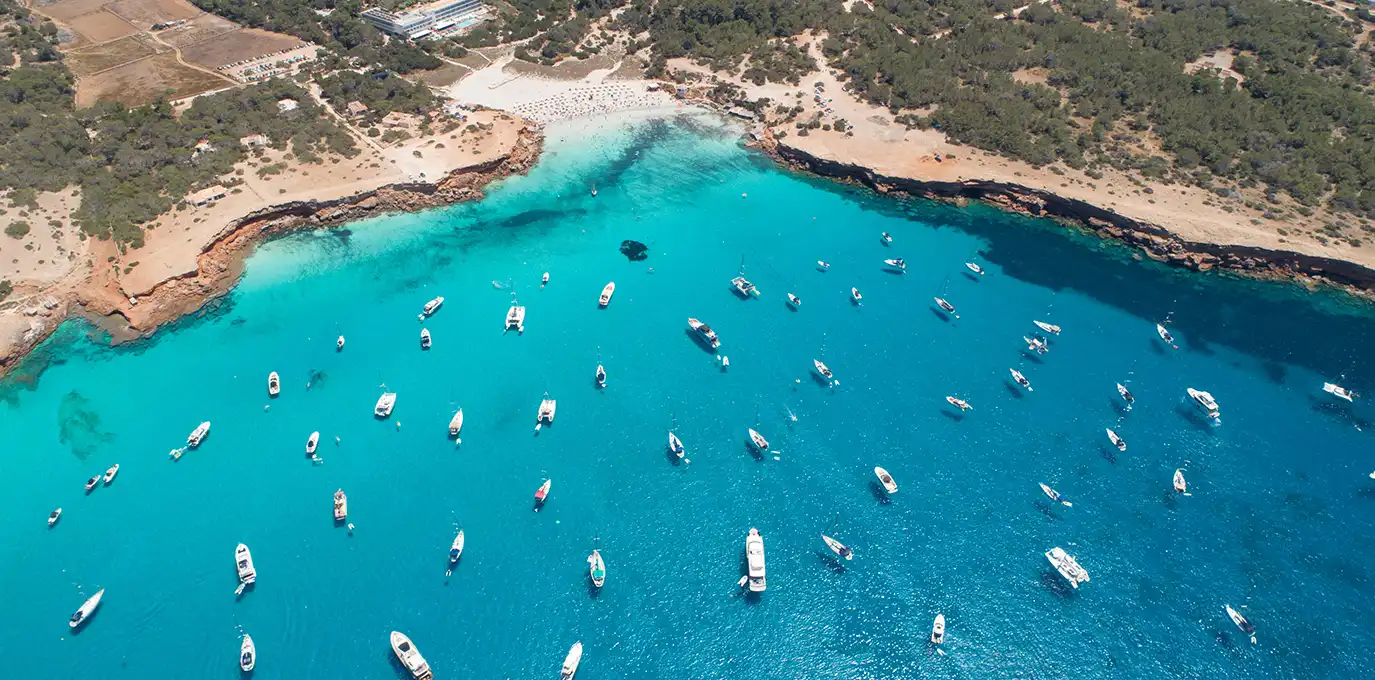
Sant Francesc de Formentera is the capital of this beautiful island filled with sand beaches, dunes, and pines. From the port of Formentera, you can easily reach it because it is just 3 kilometers away. The town is known for its parish church and a fortress that was used in the 18th century to provide protection against pirate raids. All around the town you can find craft shops and stalls that make custom jewelry, souvenirs, and different types of clothing.
Getting around Formentera is easy. There is an option to take up to 5 bus lines during the day and night one bus line. Furthermore, it is easy to walk around due to the terrain being flat, there are 32 different paths and tracks to explore. If walking isn’t your thing and you would like to have more action and be faster then feel free to exploit the option to rent both a regular bike and an electric one, they can be rented at La Savina and other spots around the island.
One of the most beautiful Peninsulas is the Trucador Peninsula on the north of Formentera, with many beaches filled with white sand and crystal-clear water making it the best place to spend your sunny day. Definitely go and explore See Illetes beach which is claimed to be one of the most beautiful in the world followed by Plata Llevant on the eastern part of Trucador Peninsula and Plata Illetes on the western side. Also, Es pas is nice to tick off the list making it the tip of the northern area on the Trucador Peninsula.
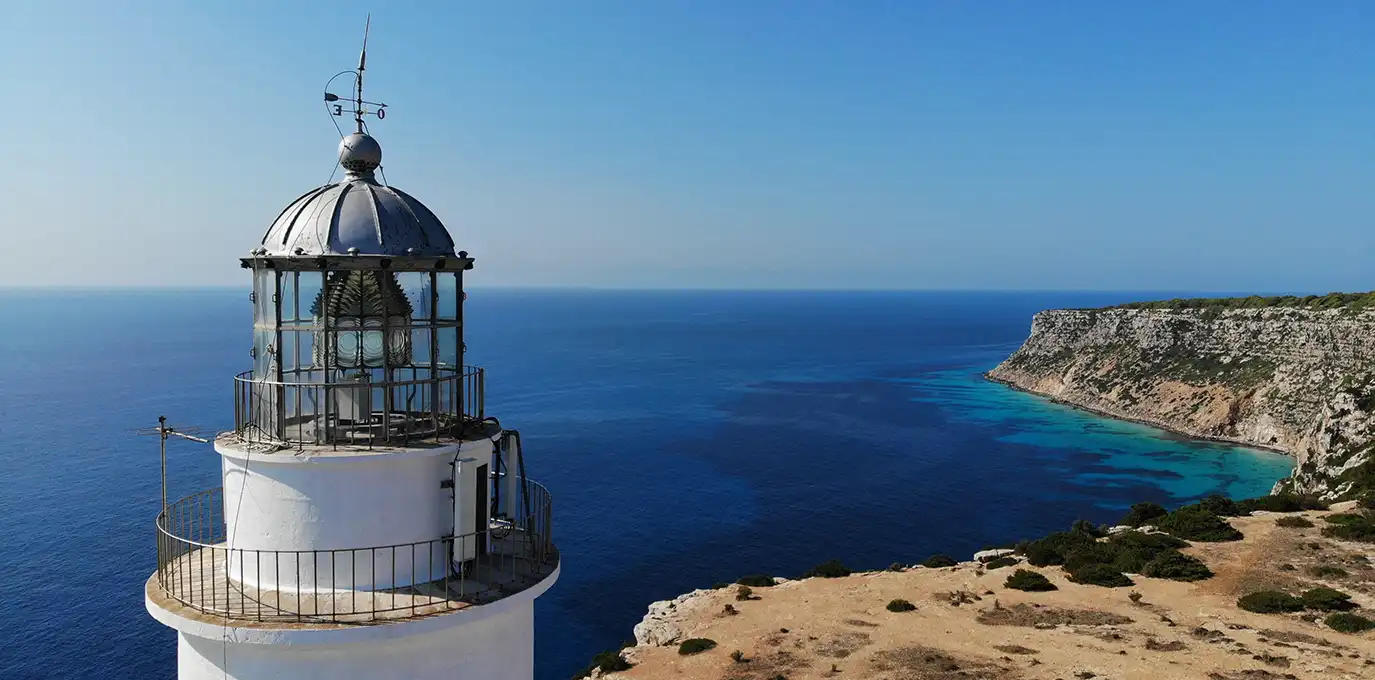
Thanks to the surroundings, which are part of an area of natural interest, and the Posidonia meadows that can be found underwater, it has earned the UNESCO World Heritage Site designation. Furthermore, on the west side of the island is Cala Saona beach. The beach is protected by green vegetation and impressive red rocks and here you can witness the most picturesque sunsets on the island.
If time is on your side, check out Formentera’s lighthouses, some of them are quite popular and become famous by appearing on the big screen because they offer breathtaking views. The most famous is the Cap de Barbaria followed by La Cueva Fordada which stands out because of a hole in the rock that leads down to a small balcony just on the end of a cliff with a wonderful view offer.
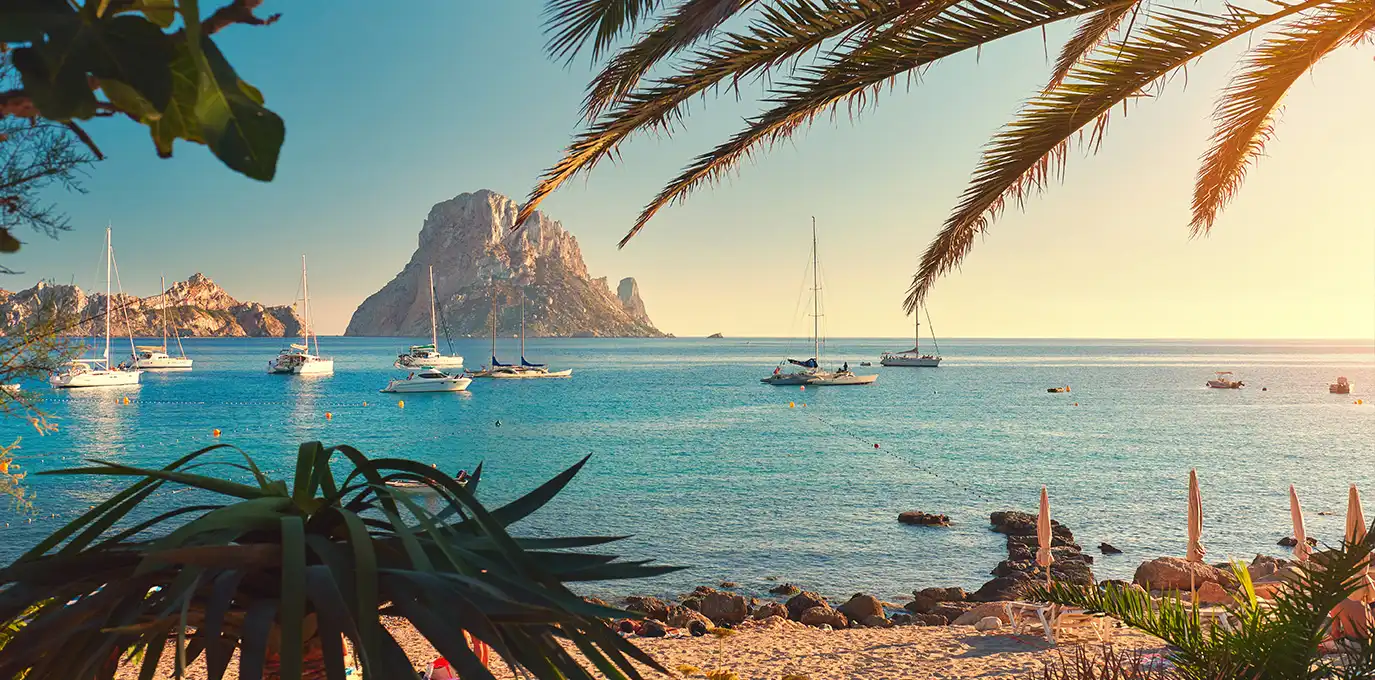
Ibiza or per Catalan Eivissa is the Capital of Ibiza Island. It is the third largest island among the Balearic Islands. Home to around 150.000 people.
Like both Mallorca and Menorca it too was a strategic point in its history. First, to be here were the Phoenician settlers who founded the port on Ibiza in 654 BC, later came under the control of Carthaginians. In the Archaeological Museum of Ibiza findings from their ruling can be found with many others that followed. Museum itself is situated on the hilltop part, named Dalta Vila which is the old historic area of the town.
This whole area is actually an old fortress with a castle, towers, a cathedral, and some residential homes. The whole complex is believed to have been built in the 16th century as a military and administration complex. Furthermore, the infantry battalion barracks were added in the 18th century and the whole site was under renovation in both the 19th and 20th centuries. However, there are archaeological findings that date to the 12th and 13th centuries. Here you can find gothic style cathedral Catedral de la Verge de les Neus (Cathedral of Our Lady of the Snow), which was built in 1235 after the Catalonian troops conquered Ibiza under the command of Guillermo de Montgrí.
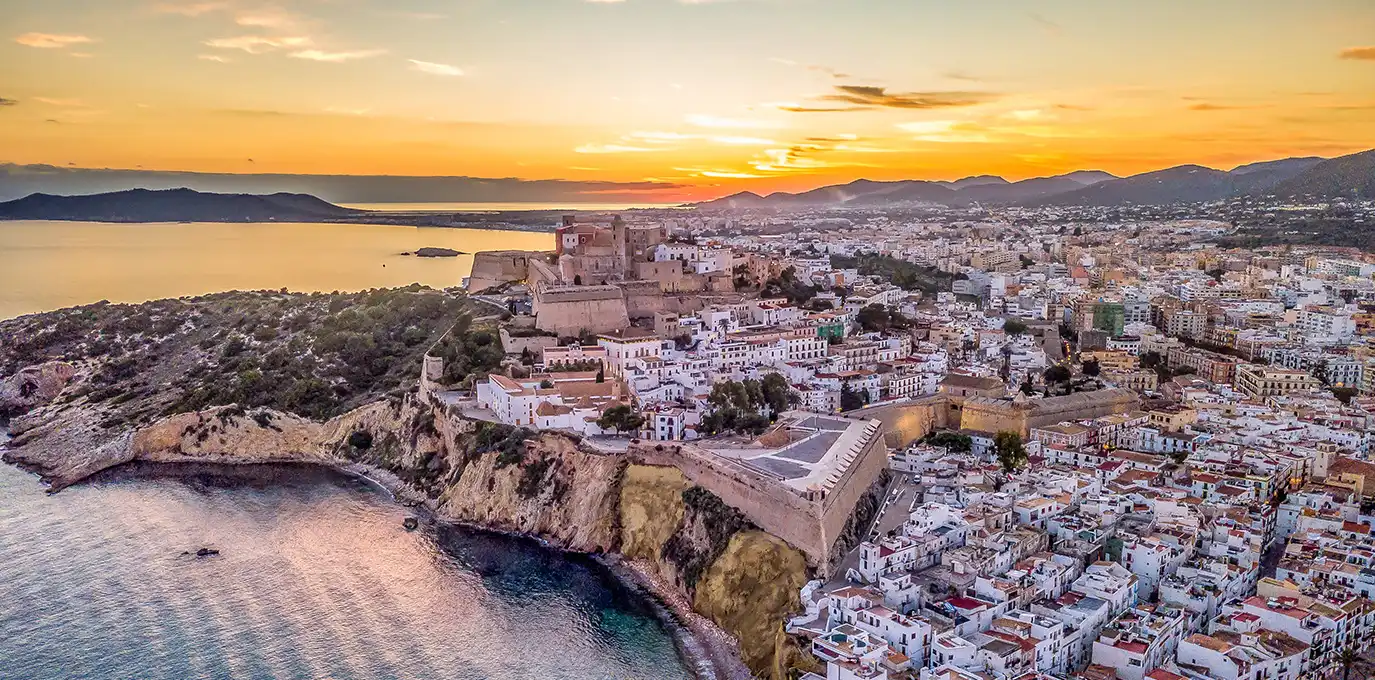
The modern part of Evissa is called Eixample (extension). There is a marina with big luxury yachts, designer shops, cafes, and restaurants.
As you know Ibiza is the ultimate destination for clubbers. So, feel free to get your dancing moves ready and show the world what you got in store. Some of the most famous electronic clubs in the world are there: Amnesia, Pacha, Eden, DC10, Privilege, and many others. Line up speaks for itself, just some of the DJs that drop their beats are Davide Guetta, Calvin Harris, Armin van Buuren, Steve Aoki, Dimitri Vegas, and Paul Van Dyk.
After lively Evissa comes a quieter and more family-friendly ambiance of the third largest town on the island, Santa Eularia des Riu. Through the years it was rebuilt and constantly changed its face so there aren’t many historical buildings.
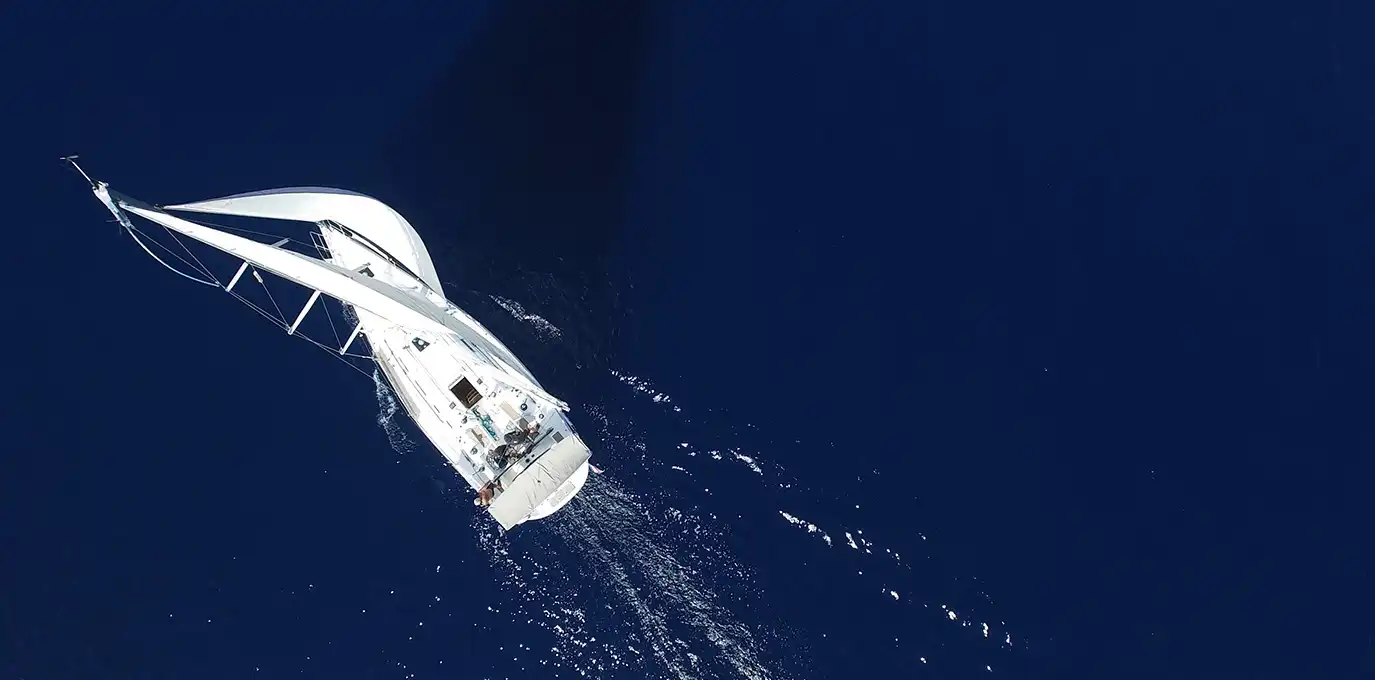
Although, outside the town center is a hill called “Puig de Missa”. This hill holds a church eradicated to honor Saint Eulalia. Believed to have been built by military engineer Giovanni Calvi in the 16th, that’s why it gives a little feeling like it is a fortress. Furthermore, there is an old bridge from the Roman period over the river Riu de Sanata Eulalia and the Roman necropolis.
There are beaches that are quite inviting to go to and relax such as Playa de Es Figueral, Cala Olivera, and Calo de S’Algar.
The last stop before going back to Palma de Mallorca is Cala Sant Vincent. It is a small village with a few hotels and apartments mainly occupied by older couples with children in search of peace, quiet, and a relaxing vacation. Many come here to enjoy its rocky coastline, walk to beaches with crystal clear seas, and beachfront restaurants.
It’s time to enjoy your last sail back to Palma de Mallorca let the created memories sink in, write all the postcards and get ready for the last adventure before your flight back home.